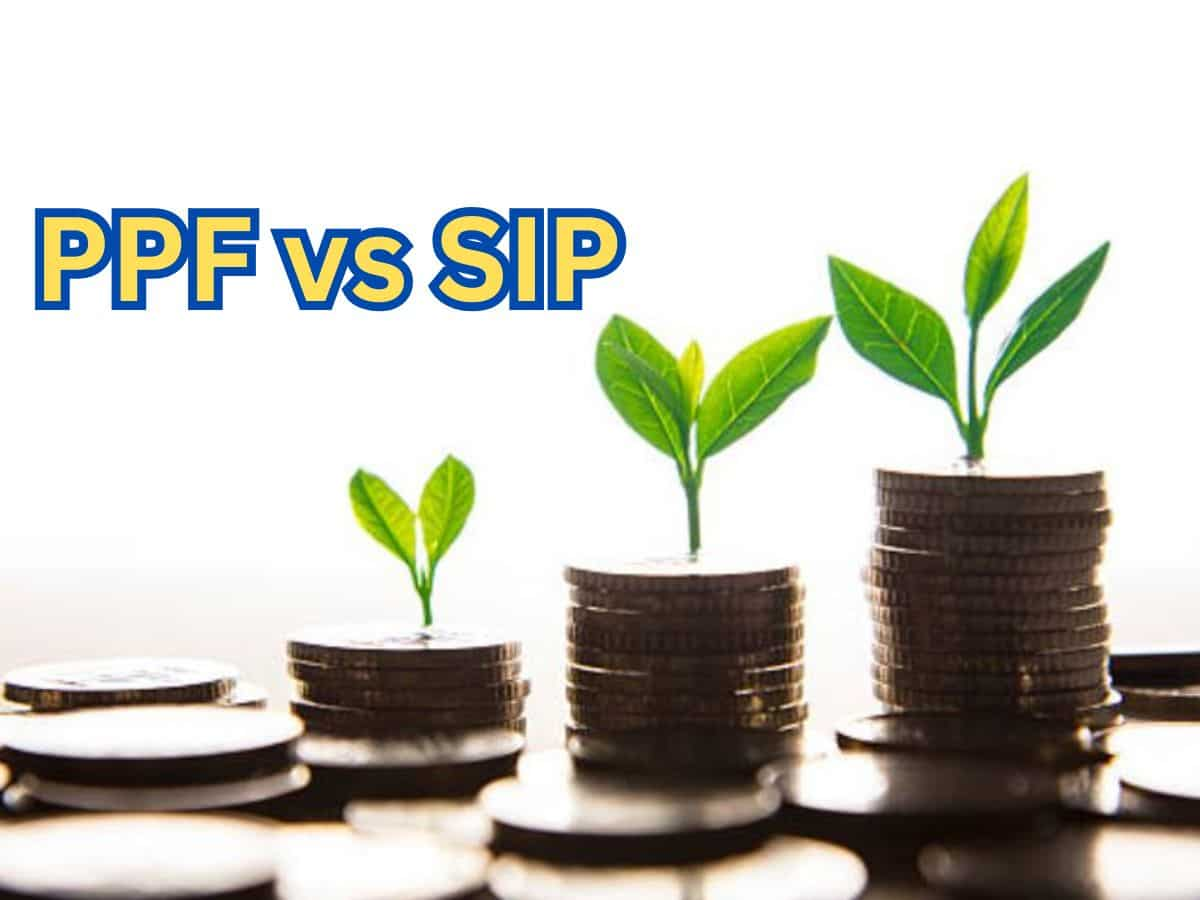PPF vs SIP: You have the option to invest in both market-linked and non-market-linked ones to create a decent retirement corpus. SIP is a market-linked mutual fund investment in which there are no sure returns, while PPF is a non-market-linked scheme with assured returns. However, both scheme needs regular and systematic investment to meet the target corpus. In this article, we will find out which of the two can build the highest retirement corpus through an Rs 11,000 monthly investment for 30 years.
What is a systematic investment plan (SIP)?
SIP is a process of investing a fixed amount in mutual funds at regular intervals. Individuals can invest daily, monthly, quarterly, or yearly in a mutual fund scheme.
What is a public provident fund (PPF)?
Public Provident Fund is a retirement-focused scheme that is also used by people to diversify their portfolio. It offers tax deductions under Section 80C of the Income Tax Act, and the interest earned and maturity amount are tax-free.
What is the minimum amount to invest in an SIP?
There is no defined minimum amount to invest in an SIP. Some mutual funds may offer SIPs with even lower minimum amounts, such as Rs 100. While other investors choose to invest larger amounts, such as Rs 500 or Rs 1000 per month. One can also increase, decrease, or stop their SIP.
What is the minimum and maximum PPF investment?
The minimum deposit per year is Rs 500, whereas the maximum deposit allowed in a year is Rs 1.5 lakh.
How does SIP work?
A fixed amount is automatically deducted from your bank account and invested in a mutual fund of your choice to purchase units (NAV) of the selected mutual fund scheme.
How does PPF work?
Any resident Indian can open a PPF account with flexible deposit options, including lump sum or installments, and a 15-year lock-in period that can be extended in 5-year blocks. Currently, Public Provident fund offers a 7.1 per cent interest rate compounded yearly.
PPF calculation conditions: Monthly Rs 11,000 investment for 30 years
Yearly investment: Rs 1,32,000 (monthly investment Rs 11,000 x 12 months)
Time period: 30 years
Rate of interest: 7.1 per cent
PPF Calculation: What will be your corpus in 30 years with Rs 11,000 monthly investment?
On a Rs 11,000 monthly contribution, the estimated maturity value in 30 years will be Rs 1,35,96,801. The estimated total interest will be Rs 96,36,801.
SIP investment conditions
Since there are no fixed returns in SIP investment, we are calculating as per annualised returns of 8 per cent (debt fund), 10 per cent (equity fund) and 12 per cent (hybrid fund)
SIP: Retirement corpus on Rs 11,000 investment for 30 years (hybrid fund)
At 12 per cent annualised growth, the estimated corpus in 30 years will be Rs 3,38,90,705. During that time, the invested amount will be Rs 39,60,000, and capital gains will be Rs 2,99,30,705.
SIP: Retirement corpus on Rs 11,000 investment for 30 years (equity fund)
At 10 per cent annualised growth, the estimated corpus in 30 years will be Rs 2,28,72,220. The estimated capital gains will be Rs 1,89,12,220.
SIP: Retirement corpus on Rs 11,000 investment for 30 years (debt fund)
At 8 per cent annualised growth, the estimated corpus in 30 years will be Rs 1,55,93,746. The estimated capital gains will be Rs 1,16,33,746.
Also Read: Power of Compounding: How soon can you generate Rs 7 crore corpus with just Rs 9,000 monthly investment?
